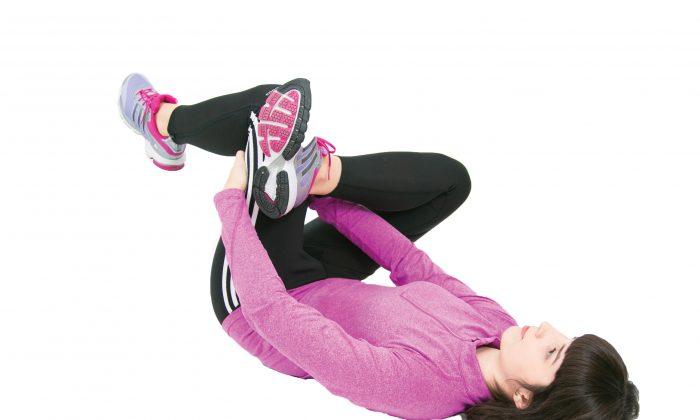Worries about developing carpal tunnel syndrome are often heard from people who spend the majority of their day moving a computer mouse at work. However, the causes of this condition are not limited to this scenario alone.
The American College of Rheumatology estimates that between 4 million and 10 million people suffer from carpel tunnel syndrome in the United States alone, with women being affected three times more frequently than men.
The carpal tunnel is formed by the wrist bones, soft tissues, and the transverse carpal ligament. It is a narrow pathway found on the palm side of the wrist and houses the median nerve.
Carpel tunnel syndrome (CTS) is a blanket term that refers to the symptoms and conditions people experience when the median nerve is compressed or squeezed as a result of swelling or inflammation in the surrounding tissues.
According to the National Institute of Neurological Disorders and Stroke, “carpal tunnel syndrome is often the result of a combination of factors that increase pressure on the median nerve and tendons in the carpal tunnel, rather than a problem with the nerve itself.”
In some people, the condition is congenital because their carpal tunnel is smaller. For other patients, there is no identifiable cause.
Swelling may result from an injury or trauma to the wrist. Medical conditions such as hypothyroidism, arthritis, diabetes, cysts, tumors, obesity, fluid retention during pregnancy, menstruation, and menopause can also contribute to CTS.
Symptoms and Treatment
CTS commonly affects only the dominant hand, although both extremities can also be affected. The symptoms usually start out gradually and appear intermittently.
Initially, people may feel uncomfortable sensations or pain in their hand that travels up the arm to the shoulder. Without treatment or intervention, other symptoms, such as weakness, decreased hand function, burning sensation, tingling, itching, or numbness may also come about.
The symptoms of CTS are insidious, and unfortunately, people often wait to seek treatment only after the problem has existed for quite some time. As a result, some cases require intense intervention.
As repetitive or forceful movements by the hand or wrist may exacerbate the symptoms, the patients are typically instructed to keep the affected wrist at rest as much as possible.
Traditional treatments may include over-the-counter anti-inflammatory drugs or pain relievers to ease acute flare-ups, as well as diuretics to help reduce swelling from water retention in some cases.
Physical therapy and corticosteroids may be prescribed for more severe cases of CTS. Doctors may also suggest surgery to cut the transverse carpal ligament if nonsurgical methods do not provide enough relief.
While surgery can be effective for many patients, some continue to experience symptoms after the operation. This could happen when the underlying causes of the pain have not been addressed.
According to the University of Maryland Medical Center, coming to “a definitive diagnosis is often difficult” because other conditions resulting from trauma or repetitive stress sometimes resemble the symptoms of CTS. Examples include thoracic outlet syndrome, in which blood vessels or nerve compression occurs at the neck, first rib, and front of the shoulder, and Guyon’s canal syndrome, in which there is pressure on the ulnar nerve in the wrist.
Along with traditional approaches for treating CTS, holistic methods such as massage therapy and targeted exercise may offer a viable option for alleviating the pain and discomfort from CTS.
Massage Therapy
“Surgery is recommended only for severe conditions where motor loss is extreme,” states the Pacific College of Oriental Medicine on its website. “Most other conditions can be treated with massage and massage therapy.”
Massage therapy integrates a preventative approach with post-injury recovery.
Massage treatments can stretch the wrist and forearm muscles and surrounding fascia, as well as increase circulation and blood flow to the hand and wrist, helping to reduce pain and inflammation. The sessions may also be expanded to shoulders, neck, and spinal areas to address the underlying causes of the symptoms.
A type of massage called neuromuscular therapy, in particular, can address potential problem areas in the spine, neck, shoulders, and arms. This massage modality is designed to alleviate pain referral patterns resulting from hypertonic or tight muscles that form trigger points or knots.
Stretching Exercise
The University of Maryland Medical Center recommends a number of corporate initiatives to mitigate the risk of work-related CTS. These include ergonomically designed office areas, “microbreaks” throughout the day, and regular exercise for the hand and wrist.
Targeted exercises can help to prevent injury and alleviate the symptoms of CTS. These typically focus on stretching the shoulder muscles, the muscles that flex or bend the wrist forward, and those that extend the wrist and bring it back.
Some of the stretches that may help are listed below. Before initiating any exercise, be sure to speak to your doctor to confirm if these moves are appropriate for you.
All stretches should be performed slowly and without force or pain, breathing out on effort. Hold the position for 10 to 30 seconds, depending on individual comfort levels. Repeat the motion on both sides 5 to 10 times.
Shoulder stretches:
• Stand about 6 inches away from one side of a door opening or corner. With elbow bent, place the hand of the closest arm on the frame just above shoulder height and lean forward through the opening.
• Stand with feet apart at shoulder width and knees soft. Place both arms out in front, bent at the elbows, with palms up and tucked in at the waist. Slowly turn the arms outward from the shoulders as far back as possible, without causing pain, until there is a stretch at the shoulder.
• In the same starting position as the stretch above, cross one arm across the chest with a bent elbow and position the outer hand of the opposite arm above the elbow of the crossed arm and press inward toward the body.
• Lying on one side, knees bent with a pillow between them, tuck the top arm in at the waist and with elbow bent to 90 degrees. Press the forearm slowly backward, with palm up while keeping the elbow in place.
Wrist stretches:
• Sitting or standing with feet shoulder-width apart and soft knees, place hands in a “prayer” position—in front, at chest level, with palms together close to the body and both elbows out. Keep the palms together while lowering hands down to the waist.
• In the same starting position as the stretch above, tuck the outer side of each wrist into the armpit of the same side, so that the arms look like “chicken wings.” Keeping the wrists tucked in, gently lower both elbows toward the floor to stretch the top of the wrists.
• Sit with one arm in front, bent at the elbow, with palm up and hand open. Use the other hand to gently push down to stretch the wrist, as well as each finger individually.
• In the same starting position as the stretch above, but with one palm down and clenched loosely in a fist, use the other hand to gently push down on the fist.
Leslie Mary Olsen is a certified personal trainer, certified health coach, fitness coaching specialist, and licensed massage therapist. She holds a master’s degree in health policy and has over 30 years of experience in the health and wellness field.




